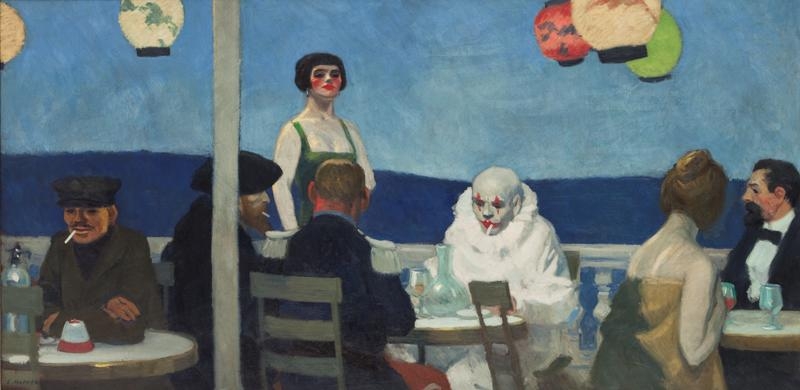
“In the 1930s, while painters are celebrating skyscrapers and cars and the angular delights of modernity, Hopper’s reaction to the modern is to stake out a timeless urban streetscape or rural view. He retreats to the countryside and paints small towns and American scenes…He likes women in impossibly tight dresses; men rarely escape the costumes of their profession; and public places promise no interaction (for this reason he repeatedly painted the lonely movie theater in his neighborhood).“
In the Observer, college friend Maika Pollack surveys the Edward Hopper retrospective at the Whitney. “He painted the quality of light with adjectival precision-cool electric light, thin morning light, the lonely light from a cinema screen. (If Hopper loved movies, the movies loved Hopper back: In his House by the Railroad [1925], we see the inspiration for Hitchcock’s Bates Motel in Psycho).”
